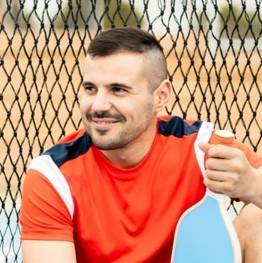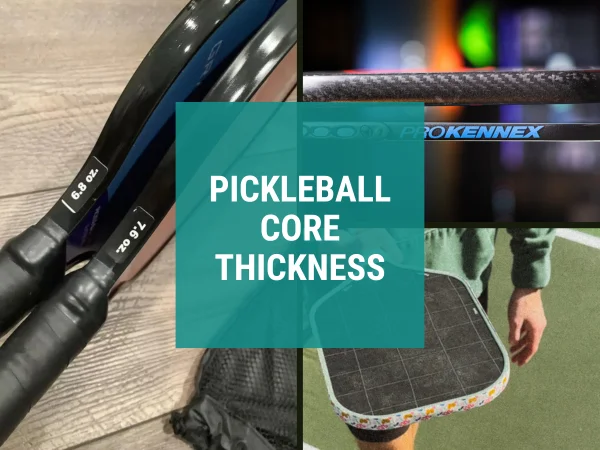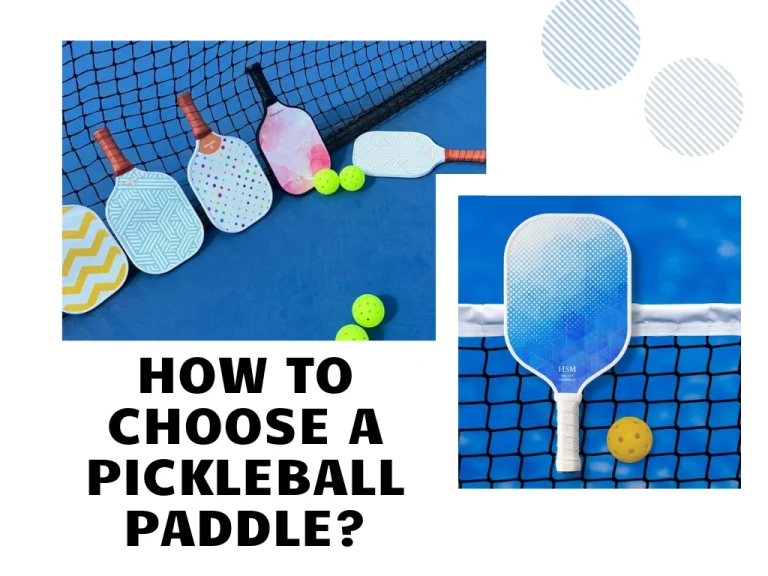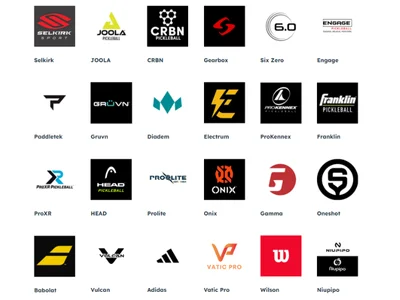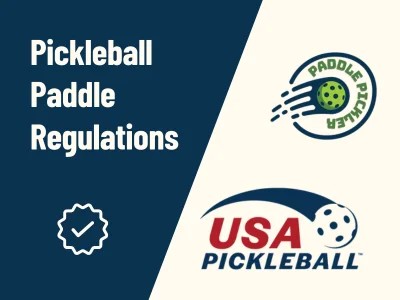Do you ever question why there are so many distinct varieties of pickleball paddles and what differentiates them? The reply lies in the different constructions of the pickleball paddle parts.
Every pickleball paddle has numerous components, each of which is essential to the paddle’s performance. This article will take you through the key parts of a pickleball paddle. Through it, you will gain more expertise in each part materials and learn how they impact each aspect of your paddle performance.
A paddle will have two major components: the head and the handle. Yet they come in a range of smaller parts include:
- Edge guard
- Paddle face
- Paddle core
- Throat
- Handle
- Grip tape
- End cap
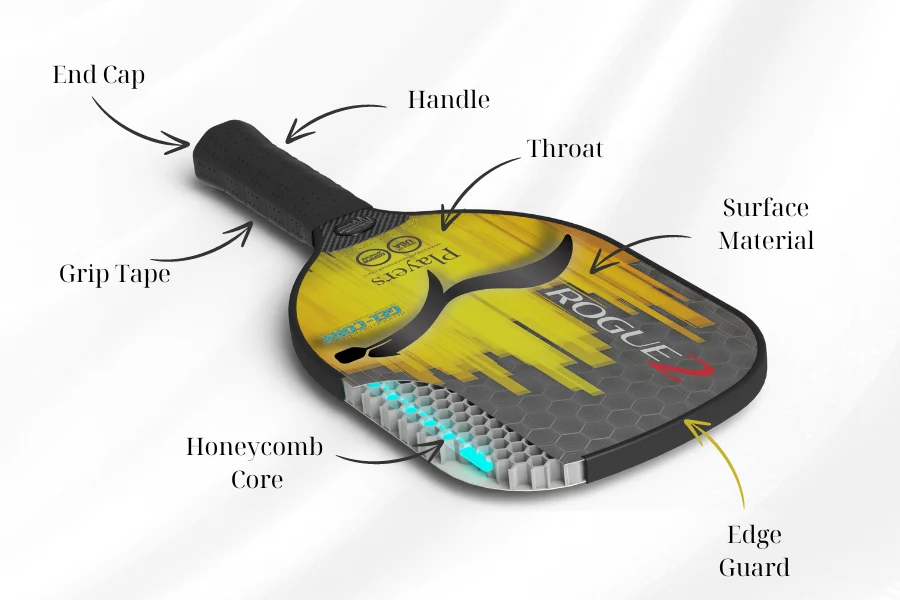
1. Edge Guard
The protective strip located along the outer edge of a pickleball paddle is also known as the edge guard. It serves as a shield to prevent damage from accidental drops, scrapes, or contact with the ground. Your paddle will be more durable if it has an edge guard, but not every paddle has this protective strip. The main difference between edge and edgeless paddles is that edge paddles are often heavier but more durable. To increase the durability of edgeless pickleball paddles, you can apply edge tape to them.
What materials are used for edge guards?
Edge guards are often made of sturdy, lightweight materials like plastic or rubber. These materials can withstand abrasion, absorb impact, and are very light. This guarantees that the edge guard minimizes the effect of the balance of the paddle.
How does edge guard affect your performance?
The paddle sweet spot is a bit smaller because of the edge guard. It means that the area where the ball hits with the best results is slightly reduced. Furthermore, the added weight from the edge guard can affect the balance and mobility of a paddle in fast-paced play. Yet, the benefits of improved durability exceed the drawbacks, particularly in longer games or on rougher terrain.
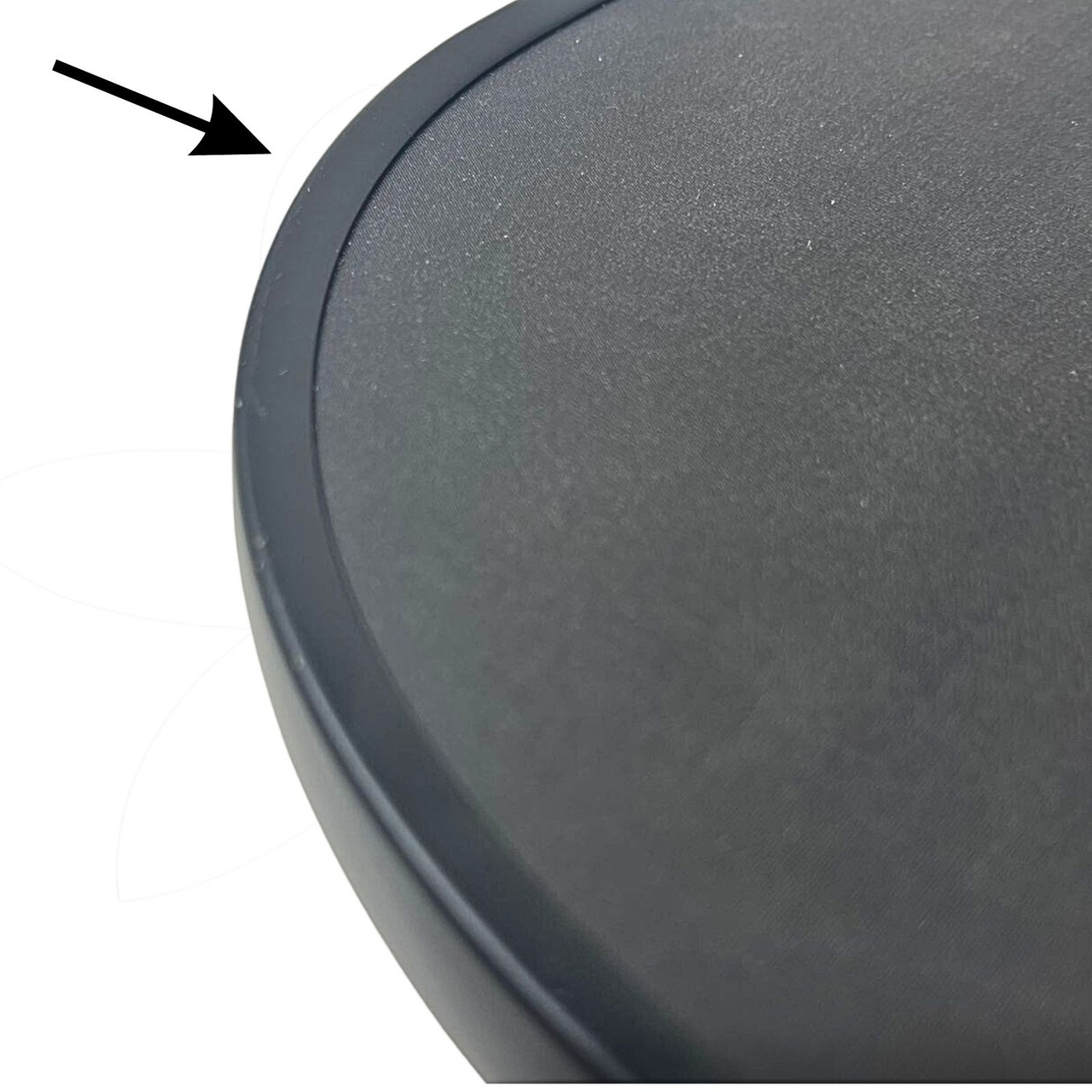
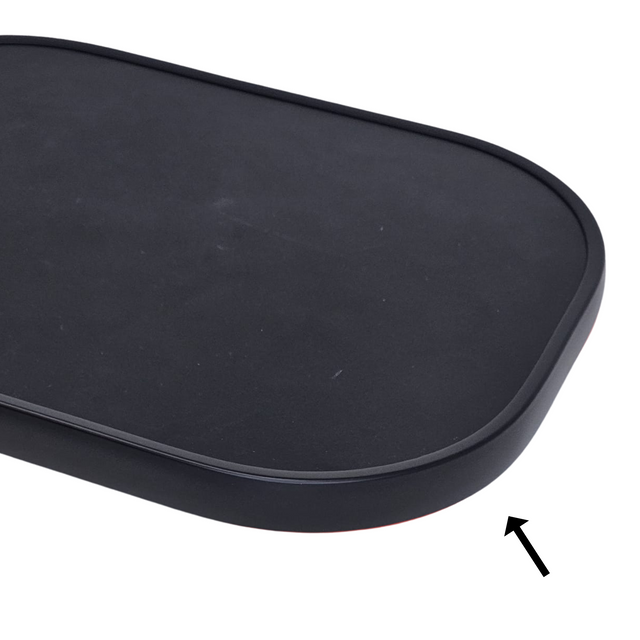
2. Paddle Face
The paddle face or the paddle surface, is a large, flat area above the paddle handle where the ball makes contact. It is located on both sides of the paddle face that sandwiches the center core within the face-core-face setup. The size, texture, and material of the paddle face play significant roles in the paddle’s general sensation and responsiveness. This part of a paddle has the biggest surface area, yet it is also the most prone to wear and degradation.
What materials are used for paddle faces?
Paddle faces are commonly made from a variety of materials. The most common surface materials include fiberglass, graphite, carbon fiber, and composite. Each material offers different characteristics.
How does paddle face affect performance?
The material selection impacts the weight, power, and responsiveness of the paddle. For instance, graphite faces give you greater control but less power. Fiberglass, on the other hand, provides less control yet more power. The paddle face also impacts the entire feel of the paddle, which affects how comfortable and confident a player feels while playing.
Moreover, the texture and coatings of the paddle face have a considerable impact on performance. A smoother surface may provide less grip on the ball, limiting the amount of spin that a player may generate. Whereas, the textured or roughened surfaces help improve spin control.
3. Paddle Core
The paddle core is the interior layer of a pickleball paddle that lies between the two paddle surfaces. It is the main foundation of the paddle and determines several aspects of its performance, including feel, power, and control.
The core absorbs impact, distributes force, and determines the overall feel of the paddle. It will determine the player’s allowable amount of power and control. The paddle core also influences weight and balance. So it is a critical component in the overall design of the paddle.
What materials are used for paddle core?
The most common materials used for pickleball paddle cores include:
- Polymer (Polypropylene): The most common core material, known for its durability, lightweight, and soft feel.
- Nomex: A firmer, more rigid, and lightweight core material, Nomex is a type of aramid fiber that offers a harder feel than polymer.
- Aluminum: This core is lightweight and offers excellent control and touch. Aluminum cores also feature a honeycomb design.
How does paddle core affect your performance?
The paddle core considerably impacts power, control, and player comfort. A stiffer core, such as Nomex, increases force, allowing players to hit with more power. On the other hand, a softer core, like polymer, works well for control and accurate ball placement. A softer core also excels at vibration dampening, providing a more comfortable experience while reducing arm strain. The lighter cores like aluminum offer easier maneuverability while denser cores add power but might reduce agility.
Another important factor is the core thickness. In general, a thicker core improves stability and control. It provides a bigger sweet spot and more forgiveness for off-center shots.
4. Throat
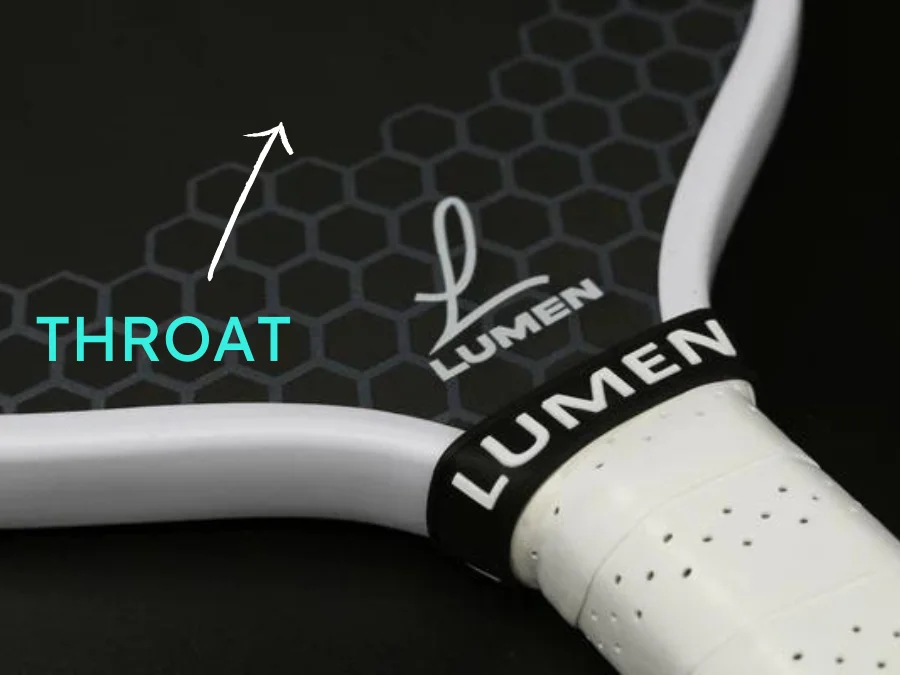
The throat of a pickleball paddle (paddle’s neck), is the area that transitions and connects the paddle face to the handle. This section serves as a structural bridge, stabilizing the transition between the paddle’s face and handle. Not all pickleball paddles have a distinct throat like tennis rackets. Yet paddles with an extended or pronounced throat can offer more rigidity and balance.
The throat is often made from the same material as the paddle’s face and core. These materials help maintain the paddle’s balance and stability without adding unnecessary weight.
5. Handle
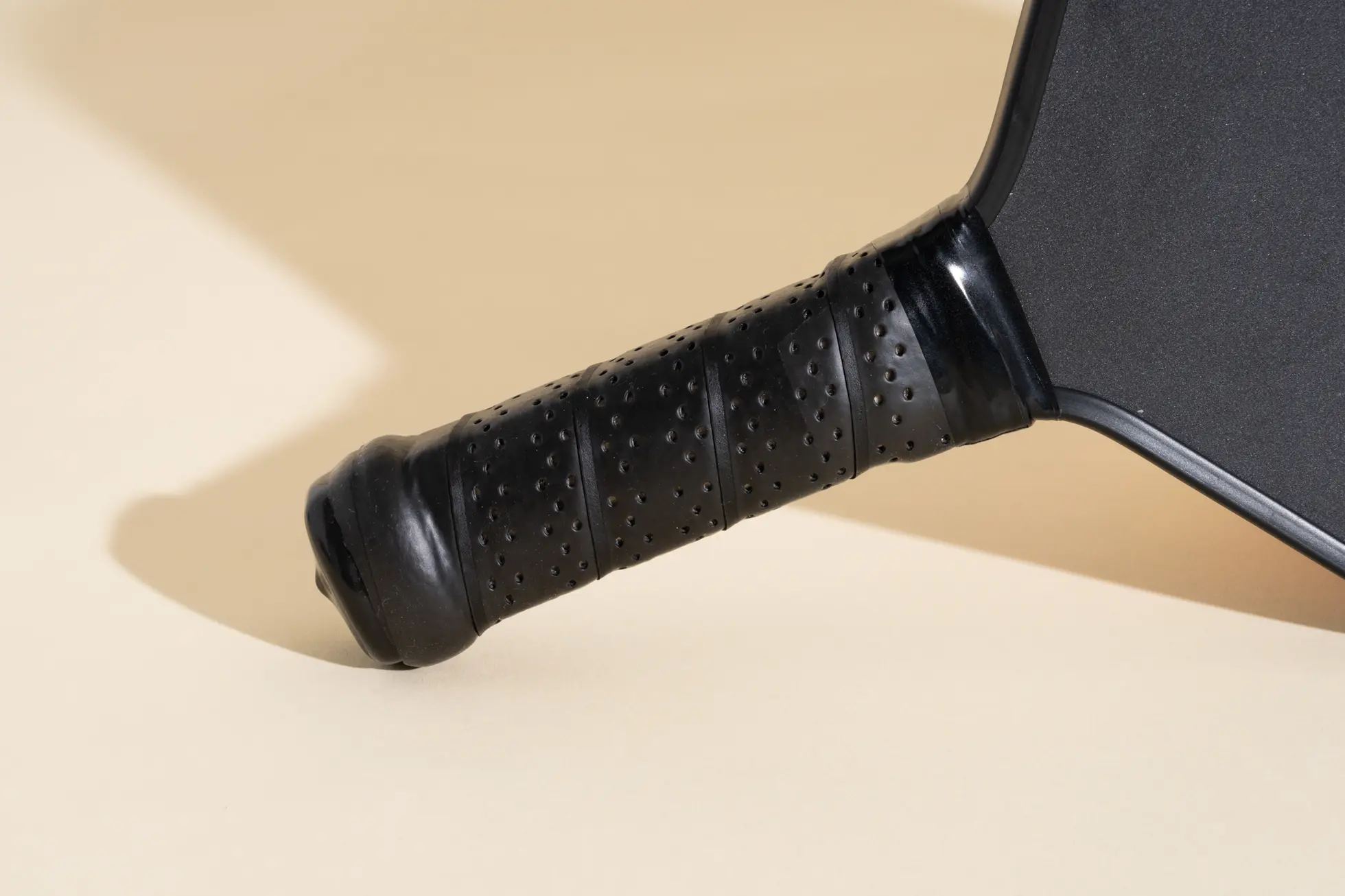
The part of a pickleball paddle that the player holds is called the handle. It acts as the primary point of contact between the player’s hand and the paddle, giving them a safe and comfortable grasp.
Handle lengths typically range from 4 to 6 inches with , with a circumference of 4 to 4.5 inches. There are several shapes for handles, including round, octagonal, and rectangular ones. This allows players to select the dimension and shape that best suits their hands for the greatest ease of use and performance.
The core of the handle often consists of the same sturdy material as the paddle core, such as composite, wood, or carbon fiber. The handle is then often wrapped with grip tape or cushioning for extra comfort. These materials are strong and can offer a stable, non-slip grip during playing.
The length and size of the handle have a considerable impact on the control, movement, and reach of players.
- Although it has a shorter reach, a shorter handle allows for improved maneuverability and quicker reaction times.
- On the other hand, a longer handle offers more power, leverage, and reach.
You can also read this comparison to understand which paddle length is better: Long Handle vs Short Handle Pickleball Paddle
6. Grip Tape
The grip or grip tape, is the outermost covering that wraps around the handle that players use during gameplay. Its functions include comfort, perspiration absorption, and safeguarding the paddle in the player’s hand.
The players can adjust the grip circumference by applying more layers of grip tape to get the thickness they want.
Grip tapes are available in a variety of textures (smooth, perforated, etc.), and cushioning thicknesses to suit varied comfort preferences.
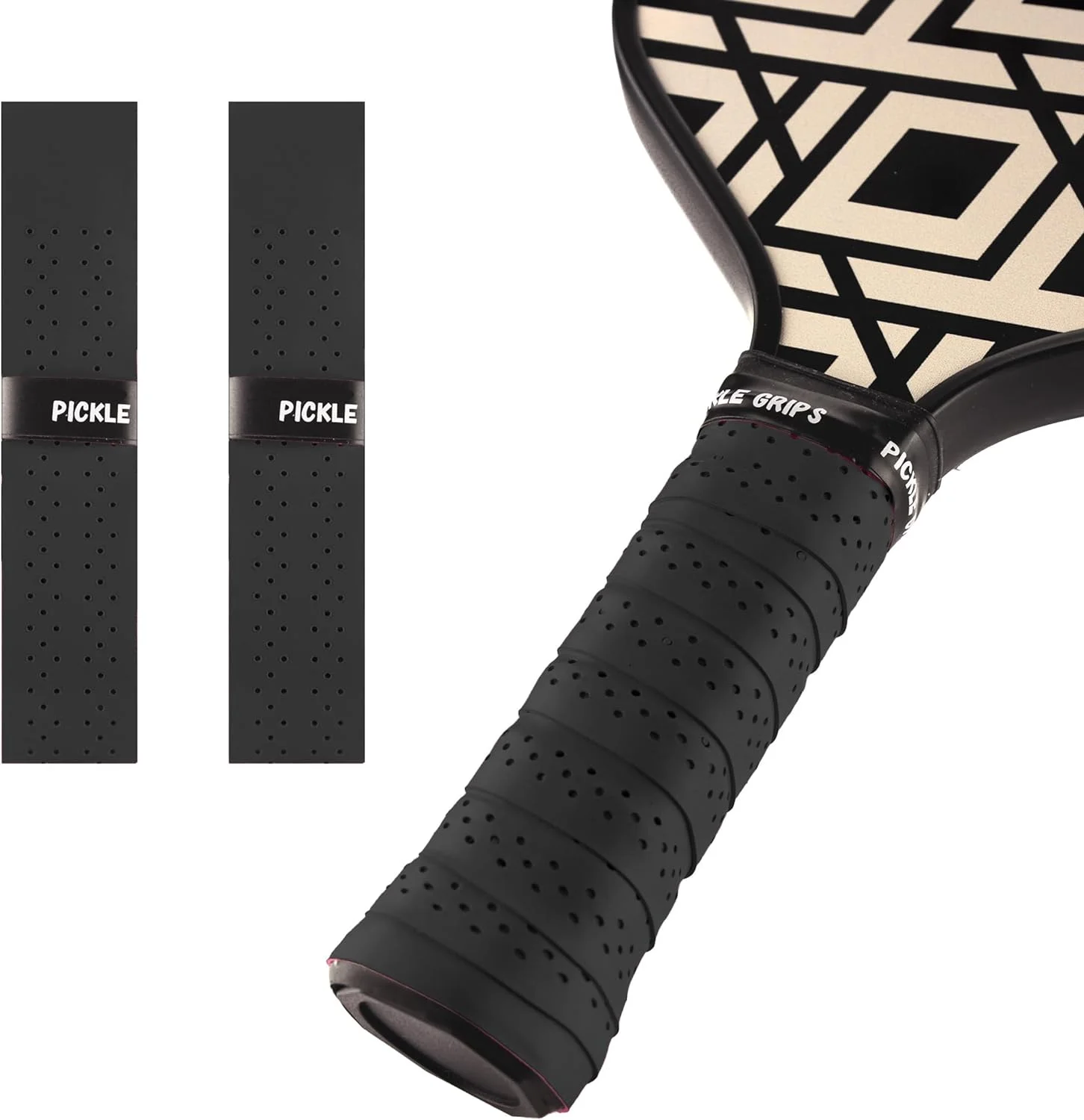
What materials are used for grip of paddle?
Grip tape is often constructed of synthetic leather, rubber, or polyurethane (PU). These fabrics have a good mix of tackiness, moisture-wicking capacity, and durability. Some grips may also include gel or foam inserts for further comfort. Others utilize perforations or ridges to increase airflow and decrease sweat buildup.
How does grip affect your performance?
The grip has a big impact on a player’s comfort and control. A well-fitted grip prevents the paddle from slipping during play, meaning more precise shots and better maneuverability. The thickness and material of the grip can also influence how much shock is absorbed during a collision. Cushioned grips absorb vibrations, reducing stress on the hand and arm of the player.
Deeper Instruction: How To Grip A Pickleball Paddle?
7. End Cap
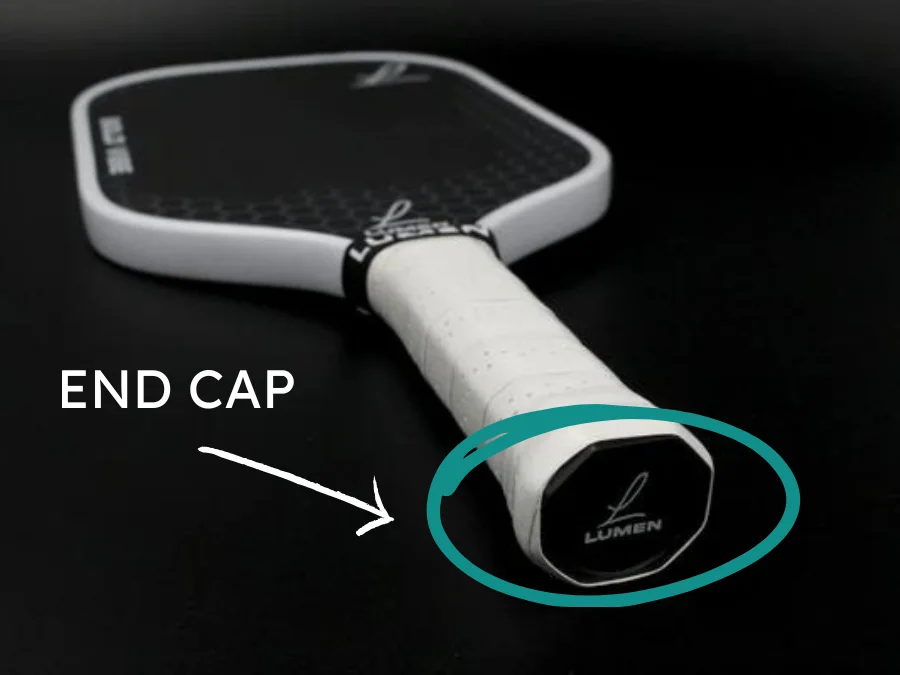
The end cap, referred to also as the butt cap, is located at the very bottom of the pickleball paddle handle. It is often a small, rounded, or flat piece of material that covers the end of the handle.
The end cap helps to seal the handle, providing a finished look while also protecting the internal components of the paddle. It can come in various shapes and materials, depending on the design of the paddle and manufacturer preferences.
End caps are commonly made from plastic or rubber. Plastic end caps are often used for their durability and cost-effectiveness. Whereas rubber end caps may offer extra shock absorption and a more comfortable feel.
Other Invisible Factors Of A Pickleball Paddle
When choosing a pickleball paddle, in addition to the tangible characteristics described earlier, two essential invisible factors can have a significant impact on your performance, include:
- The sweet spot
- Balance points
These factors, while not quite obvious, have an important part in how well a paddle performs during play.
Sweet Spot
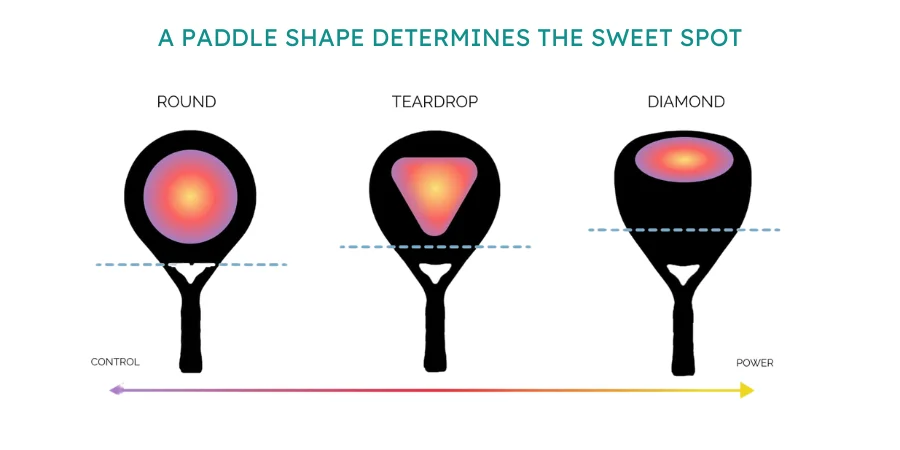
The sweet spot of a pickleball paddle is the location on the paddle face where hitting the ball results in the best mix of control, power, and minimal vibration. Its exact location varies depending on the paddle’s design and manufacture, yet it tends to occur toward the center of the paddle face.
The position and size of the sweet spot are critical for consistent performance even while not physically visible. A larger sweet spot offers more forgiveness, resulting in improved performance on off-center hits. Paddles made with improved core materials and surface technology often have optimized sweet spots. So high-end paddles tend to provide players with a more efficient and enjoyable playing experience.
Balance Points
The balance point of a pickleball paddle refers to the distribution of weight along the paddle’s length. It affects how the paddle feels during play, influencing the player’s swing mechanics and overall comfort. Paddles can be categorized into three main balance types:
- Head-Heavy: Paddles with more weight towards the head (or top) provide extra power but can be less maneuverable.
- Handle-Heavy: Paddles with more weight towards the handle offer better control and maneuverability but may reduce power.
- Even-Balance: Paddles with a balanced weight distribution between the head and handle offer a blend of power and control.
In Short
The pickle paddle is made up of several pieces, each of which has a separate function. Each part of a pickleball paddle, no matter how big or small, plays an important role in creating performance and feel when playing. From the edge guard to the face, core, throat, handle, grip and the end cap, all play a role in your on-field performance.
Each part’s construction, material, and design will result in variances between paddles. As a result, understanding, carefully selecting, and combining these factors will help you improve your pickleball game.

